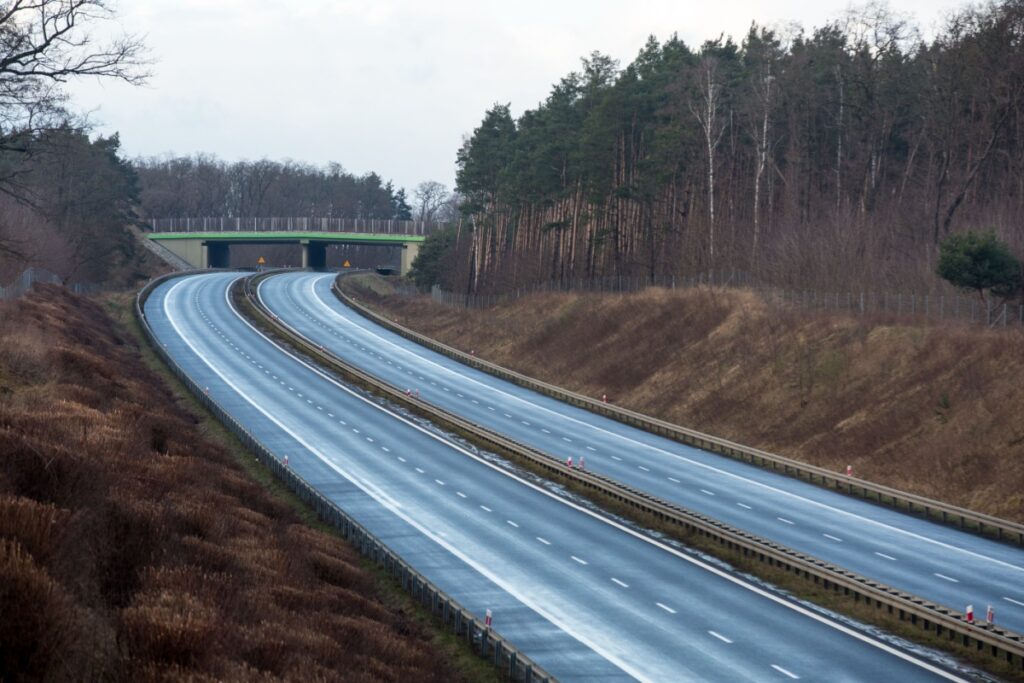Poland has opened the final major section of the S3 expressway, creating a continuous north-south transport corridor that connects the Baltic port of Świnoujście to the Czech Republic. The new road significantly shortens travel time between the two nations and represents one of the most ambitious infrastructure projects in Poland’s recent history. Officials described the opening as a “strategic achievement” that will boost both domestic and regional economic activity.
Major Infrastructure Milestone Strengthens National Connectivity
The expressway now spans approximately 470 kilometers, crossing three key voivodeships: West Pomeranian, Lubusz, and Lower Silesian. The last segment, opened this week, runs from Lubawka near the Czech border to Bolków, closing the only remaining gap in the route. The project has been years in the making and forms part of the trans-European E65 corridor, which links northern Scandinavia with southern Europe.
Poland’s Prime Minister attended the opening ceremony, emphasizing that the S3 represents not only a transport improvement but a broader symbol of economic modernization. The government stated that travel from Świnoujście to the Czech border can now be completed in around six hours, a reduction of nearly two hours compared to previous routes.
A Decade-Long Project Reaches Completion
Construction of the S3 began in stages over a decade ago, with sections gradually completed and opened to the public. The expressway’s complexity lay in both its length and the varied terrain it traverses, including forested areas, river valleys, and mountainous regions near the southern border.
The General Directorate for National Roads and Motorways (GDDKiA) oversaw the investment, which was co-financed by the European Union’s Cohesion Fund. According to the transport ministry, the total cost of the project exceeds 20 billion złoty (around 4.5 billion euros), reflecting the scale of construction and engineering challenges involved.
Each phase required extensive coordination between local governments, construction firms, and environmental agencies. Particular attention was given to wildlife crossings and environmental mitigation measures, given that parts of the route pass through protected natural zones. The completed expressway includes multiple dual carriageway sections, tunnels, viaducts, and bypasses designed to minimize congestion and enhance safety.
Economic and Regional Benefits Expected
Officials expect the S3 expressway to play a vital role in regional economic growth, particularly by improving access to industrial zones and logistics hubs in western and southern Poland. The road also enhances links to the port of Świnoujście, strengthening Poland’s export capacity and facilitating smoother trade between Baltic ports and Central Europe.
Analysts note that Poland’s investment in north-south infrastructure supports its ambition to become a key logistics and transit center for the region. Improved connectivity may attract further foreign investment and strengthen cooperation within the Three Seas Initiative, an alliance of Central and Eastern European countries focused on transport, energy, and digital infrastructure.
In addition to freight transport, the expressway is expected to support tourism by improving accessibility to major destinations such as the Sudetes Mountains and the historic cities of Legnica and Zielona Góra. Residents along the corridor anticipate reduced travel times and increased commercial opportunities as local economies benefit from higher traffic volumes and improved accessibility.
Strategic Link to the Czech Republic and Beyond
While the Polish section of the S3 is now complete, full cross-border continuity will be achieved once the Czech Republic finalizes its connecting D11 motorway. Prague’s transport ministry has confirmed that its side of the link is under active construction, with completion expected in 2026. Once finished, the two roads will form a seamless highway system stretching from the Baltic coast to Hradec Králové and further into the Czech motorway network.
The S3’s integration with European transport corridors reflects Poland’s broader modernization drive. In recent years, the government has invested heavily in highways, rail networks, and border infrastructure, transforming the country into one of the EU’s leading infrastructure developers. Transport Minister representatives noted that projects like S3 contribute to “a stronger, more connected Europe,” underscoring their importance for both economic security and regional cohesion.
The S3’s completion is widely regarded as a success story of consistent national planning and effective use of EU funding. For travelers and businesses alike, it marks a tangible improvement in mobility, safety, and accessibility across Poland’s western regions. The expressway stands as a defining example of Poland’s long-term vision to integrate its transport system with the rest of Europe, linking the Baltic to the heart of the continent.


